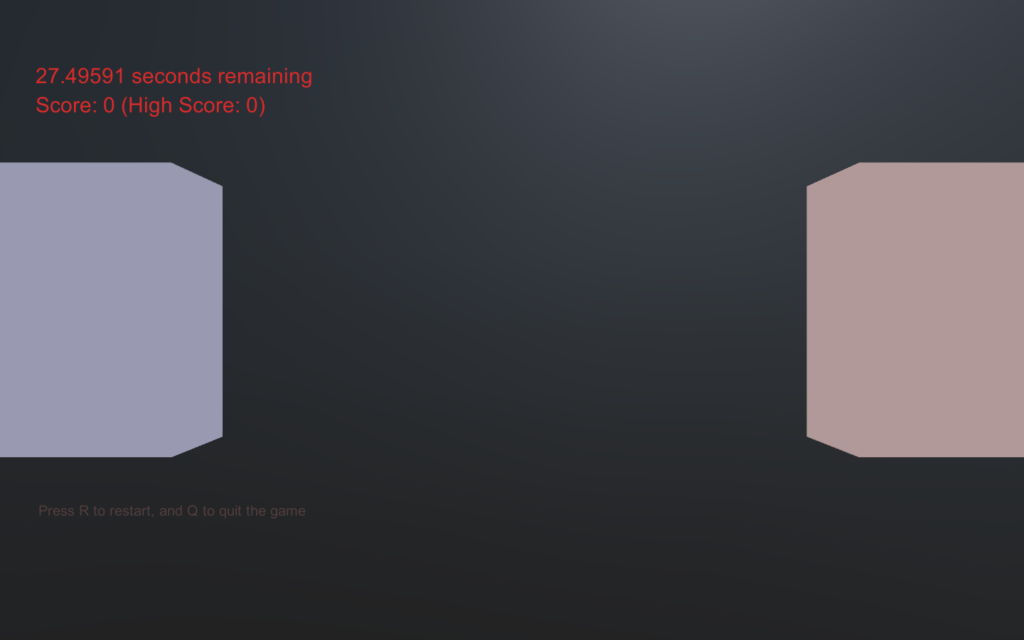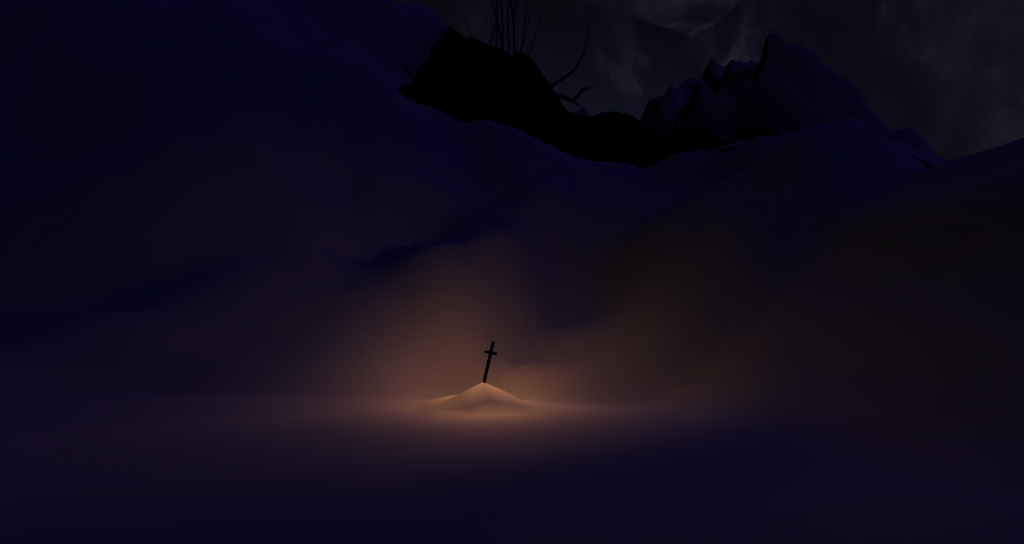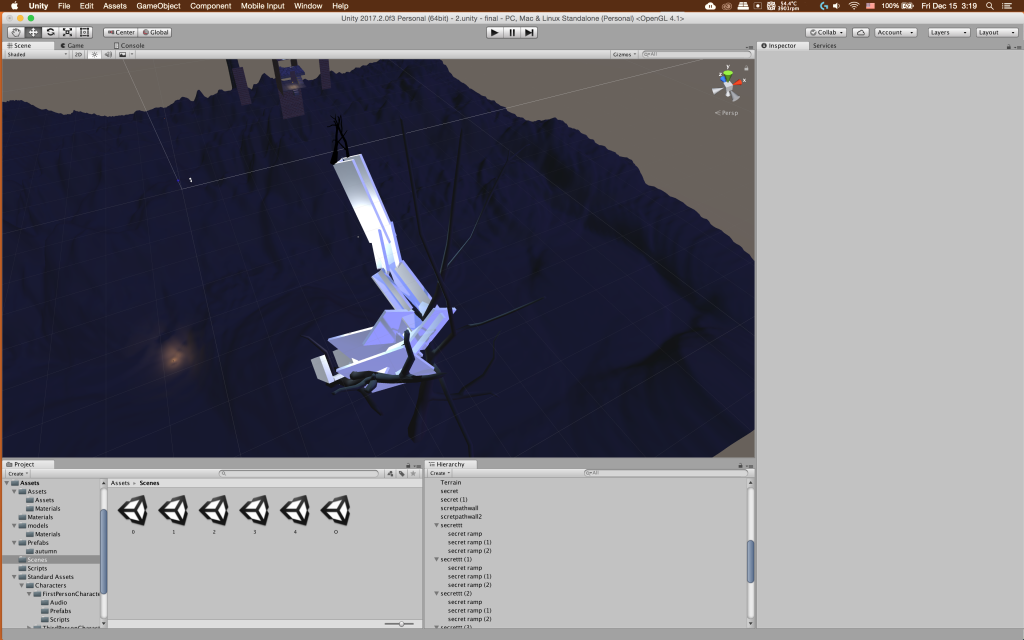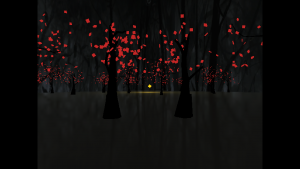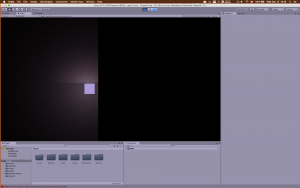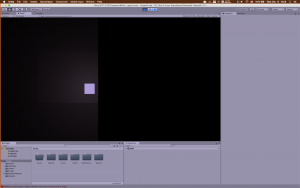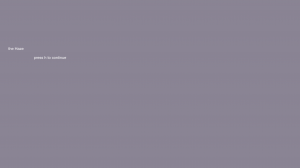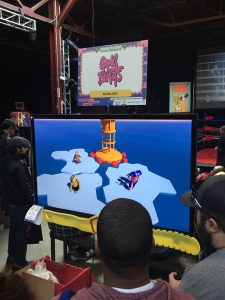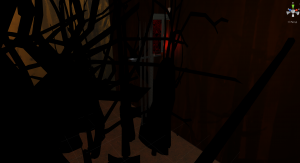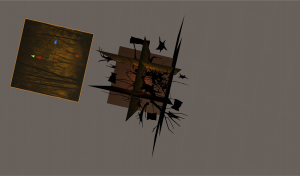I think my winter level definitely had the smoothest creation curve. What I mean is that the usual initial period of faffing around, unsure of how to start and get a cohesive aesthetic going, was fairly short, especially when in comparison to the rate at which I was soon able to get pretty solid looking things into the level. For reference, my winter and summer levels both took roughly the same amount of time to complete (4 hours), and my summer level is definitely not my best moment in game creation.
That’s not to say my winter level was actually objectively easy to create though; I still had a pretty terrible period of realizing that my initial vision was not going to work at all. Originally, I’d wanted to have the snow be extremely low poly and fairly flat, with only a bit of a depression to indicate the path to take; the setting was supposed to be utterly colorless, with a pale grey flat snow land reflecting the darker grey snowy sky. As the player walked for a short while, hopefully induced to feel longer from a combination of silence and colorlessness hitting abruptly after a super bombastic ending to the Fall level, a string of decrepit building skeletons would eventually come into view, while the title for the level would appear in thin black sans serif font all artsy fartsy like in the top left quadrant of the screen.
It ended up being impossible to make the path short enough that you could see the flat horizon all around while deep enough to convincingly feel like the only direction to go. Additionally, my attempt to create grey snow and skies was absolute junk. This was the first key for what would be my actual winter level, as I once again took out my frustrations on the custom skybox feature and threw around its variables to the max. This time though, I tried beating up the procedural skybox feature, and suddenly found myself staring at an absolutely enormous pale sun/moon with a pitch black sky. To hide this reveal, that meant the player had to start in a cave, and so I spent a while transforming the original path into a much more dramatic start.

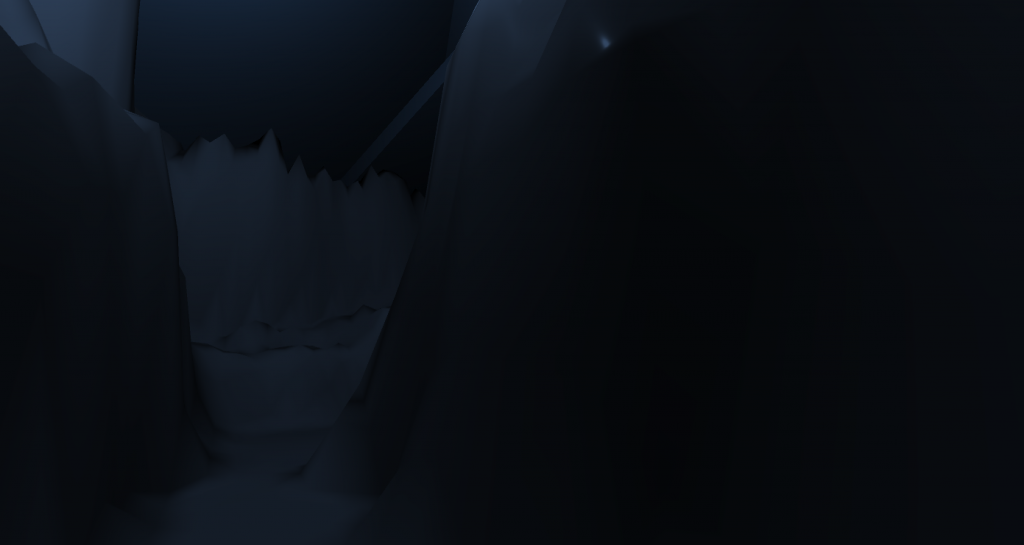
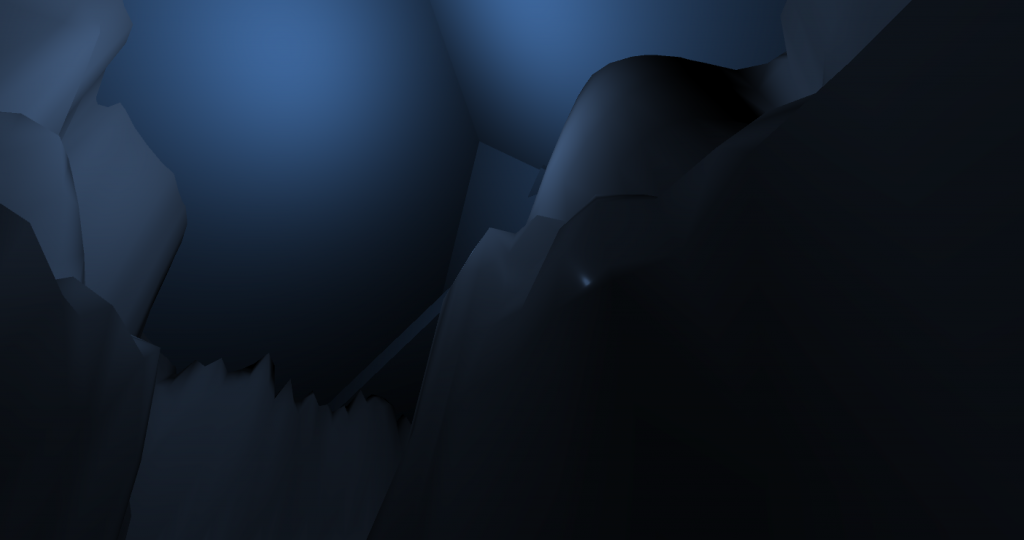
I’m pretty happy with the appearance of the cave, though I’m not sure what’s up with the rendering. The final game I released lacks the darkness and rendered shadows, and is garishly glossy and overexposed as opposed to what I was seeing in test runs above.
Definitely the highlight for me though was the construction of the big secret, though my efforts seem to have mostly been put to the side. I spent a huge amount of time adjusting the terrain of this mountain so that from a certain angle it would have a noticeable giant unnatural landmark carved into the mountain, but not simply just look like a bunch of giant spikes right next to each other. This was part of the reason I made the entrance covered in actual giant spikes, both for dramatic effect and to hopefully let the player notice the contrast.
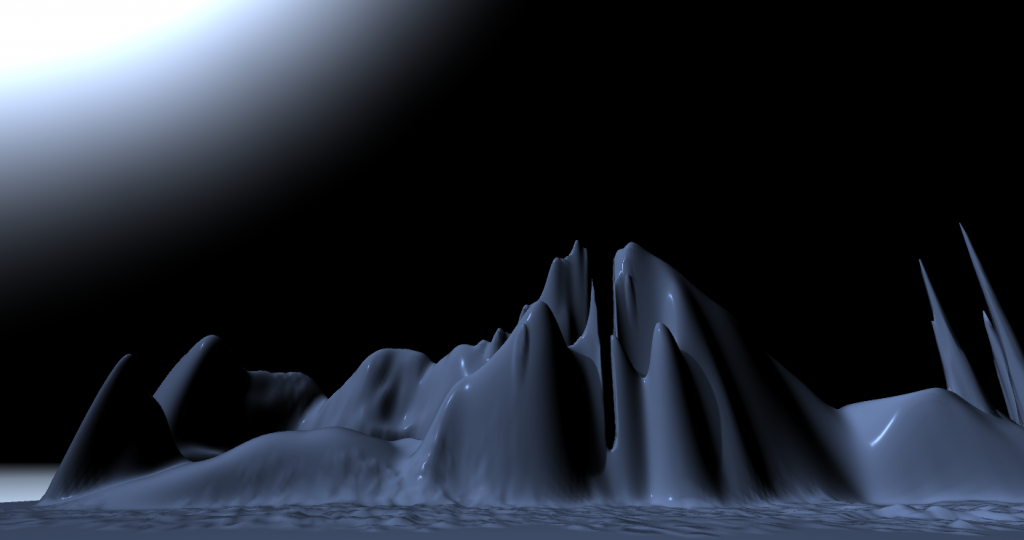
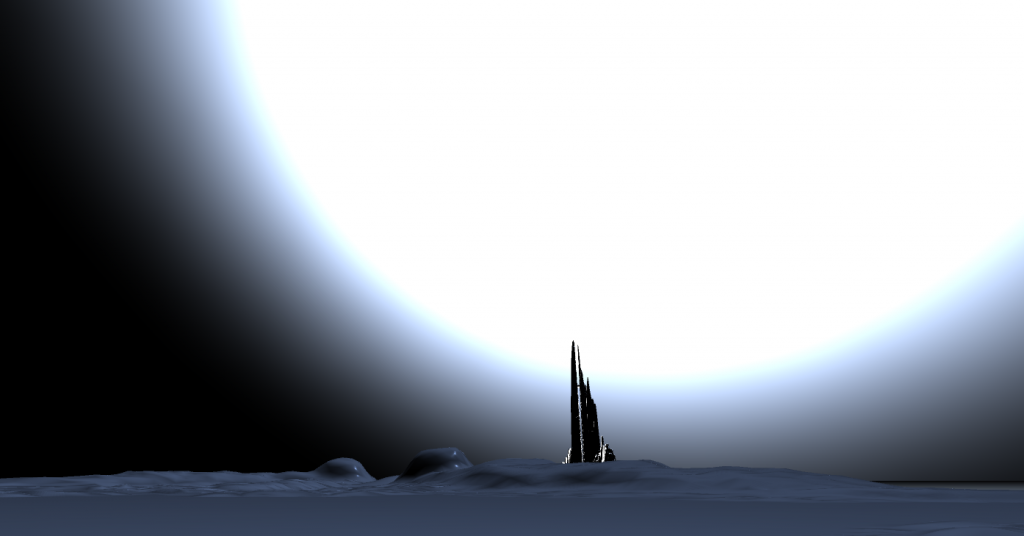
I’m pretty sure I failed though in my attempt to hint at the connection between the two secrets in their landmark though, as this actual glaring hint, the giant mountain illuminated by the moon when you first exit the cave, really does just look like two giant spikes next to each other. I definitely want to make sure I find a better balance of obscurity and detectability, because I think this is by far the most fun secret and gameplay moment in my game.

